Breakbeats are the backbone of many electronic and hip-hop tracks.
They can inject energy, groove, and a vintage sound into your music to help make your tracks stand out above the competition.
As an electronic or hip-hop producer, knowing all about breakbeats can seriously elevate your production skills and make your beats unforgettable.
That’s why I’m breaking down everything you need to know, like:
- What are breakbeats? ✓
- Selecting drum samples ✓
- Programming breakbeat patterns ✓
- Layering sounds in breakbeats ✓
- Processing and effects ✓
- Time-stretching and pitch-shifting ✓
- Chopping and rearranging breakbeats ✓
- Using breakbeat loops in all genres ✓
- Live breakbeat creation/how to perform them live ✓
- Mixing and mastering breakbeats ✓
- Advanced techniques for big beat energy ✓
- Much more for producers ✓
After reading this article, you’ll know everything about how to create breakbeats that captivate listeners and make your tracks dancefloor-ready.
Plus, you’ll be able to program intricate patterns, layer sounds like a boss, and manipulate breakbeats like a true professional.
This way, you’ll always have the edge in producing dynamic, powerful music that resonates with your audience in the clubs.
So, let’s dive in…
Table of Contents
What are Breakbeats? Breaking it Down
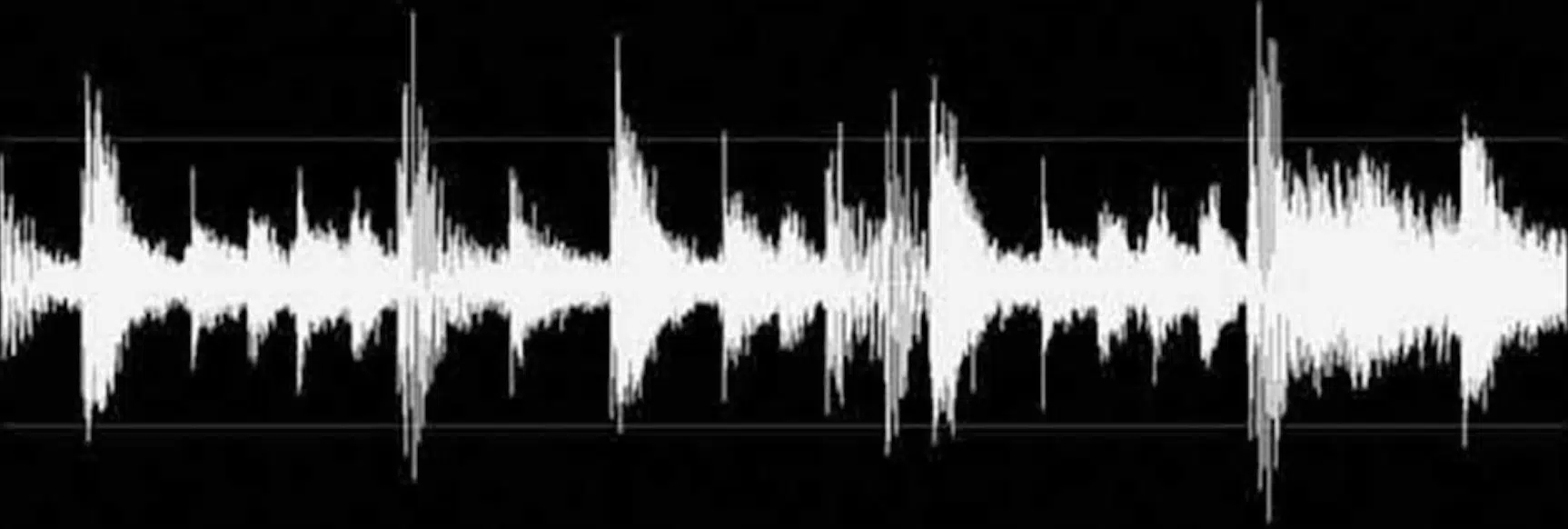
Breakbeats are short drum patterns sampled from existing songs throughout history, often from the 60s and 70s (like the Honey Drippers rock band).
They are the backbone of many genres like I mentioned before, especially when it comes to hip-hop and electronic music.
A drum break typically lasts for one or two bars, characterized by its funky, syncopated rhythm that people absolutely love.
Producers often sample breakbeats from famous tracks like the “Amen break” and the “Funky drummer,” which are two of the most sampled ones.
These drum breaks give a vintage sound to modern tracks 一 creating a bridge between old-school grooves and more contemporary beats.
Pretty sick combination if you ask me.
Breakbeats have become a staple in many genres, so they’re essential for any producer to master, which we’ll break down (in detail) throughout the article.
Selecting Drum Samples
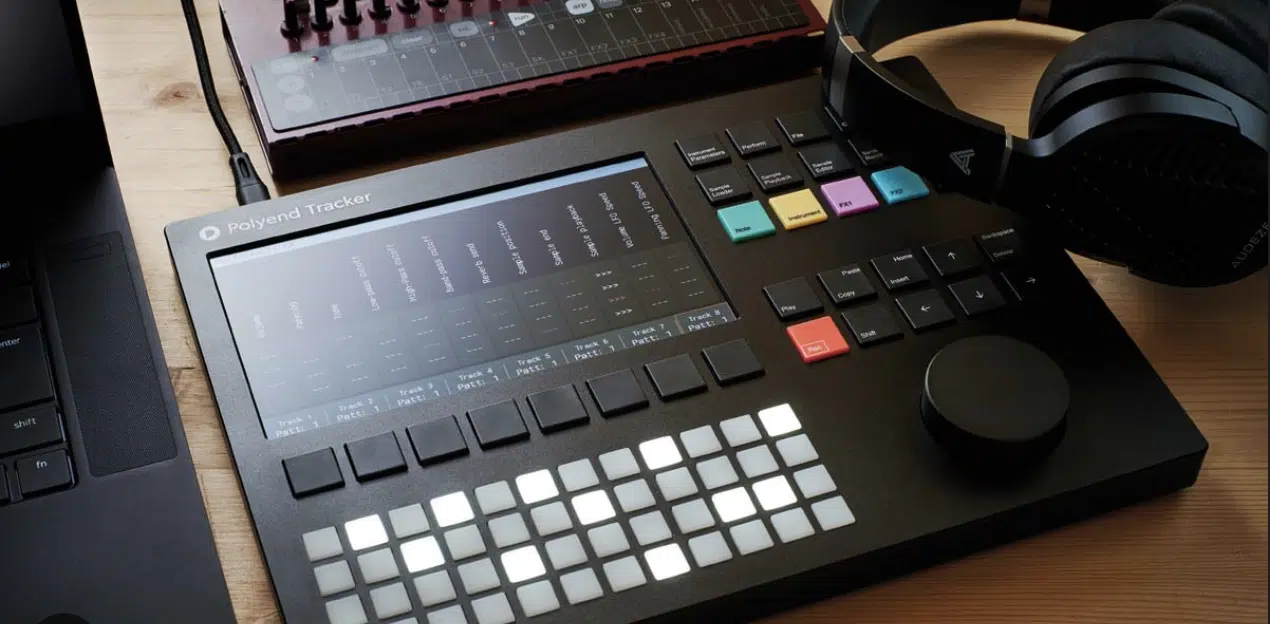
Choosing the right drum samples for your song is the first step in creating breakbeats.
Look for samples with a vintage sound, like those found in the “Amen break” or “Funky drummer.”
Keep in mind that sampling from original records can give your tracks an authentic feel which people really respond to (even though it’s subconscious).
But, of course our drum samples are top-notch, plus we have the best free options in the world, so make sure to check them out if you want a modern spin.
For instance, use a kick from the “Amen break” record combined with a snare from the “Funky drummer” to create a unique groove.
NOTE: Always aim for clear, punchy samples to make your beats stand out.
Programming Your Breakbeat Patterns

Once you have your samples, it’s time to program your breakbeat patterns.
Start by laying down a basic drum break, such as placing a kick on beats 1 and 3, and a snare on beats 2 and 4.
To add syncopation:
- Insert hi-hats on the offbeats.
- Try adding ghost notes on the snare for a more dynamic rhythm.
For instance, you can add a ghost snare on the “e” of beat 2 to create a shuffle feel.
Look at classic patterns like you’ll hear in “Amen break” and the “Funky drummer” for inspiration (yes, I’m using those examples a lot, but they’re still the most popular).
Chopping these patterns and rearranging their elements can really bring some exciting new variations to the table, so that’s always advised.
Make sure to play around by shifting kicks or snares slightly off the grid to create a more human, less robotic feel 一 ensuring your breakbeats have a groove that stands out.
Layering Sounds in Breakbeats

Layering sounds in your breakbeats can add extra depth and richness to your tracks, which is something you always want.
Start by combining different drum samples, like layering a punchy modern kick with a vintage kick from the “Amen break” for a fuller sound.
Use additional percussion elements to add texture and complexity to your breaks, like:
- Shakers
- Tambourines
- Claps
- Rim shots
For example, layer a tambourine on top of the hi-hats to create a shimmering effect.
Layering can also involve using different sounds for the same drum hit 一 try layering a deep 808 kick with a crisp acoustic kick.
This technique can make your breakbeats stand out in the mix, adding both weight and clarity, but don’t forget to EQ each layer.
This will ensure that everything complements each other without clashing.
By carefully balancing these layers, you can create breakbeats that are both powerful and detailed (plus, hopefully get a brilliant idea or two in the process).
Pro Tip: Processing and Effects
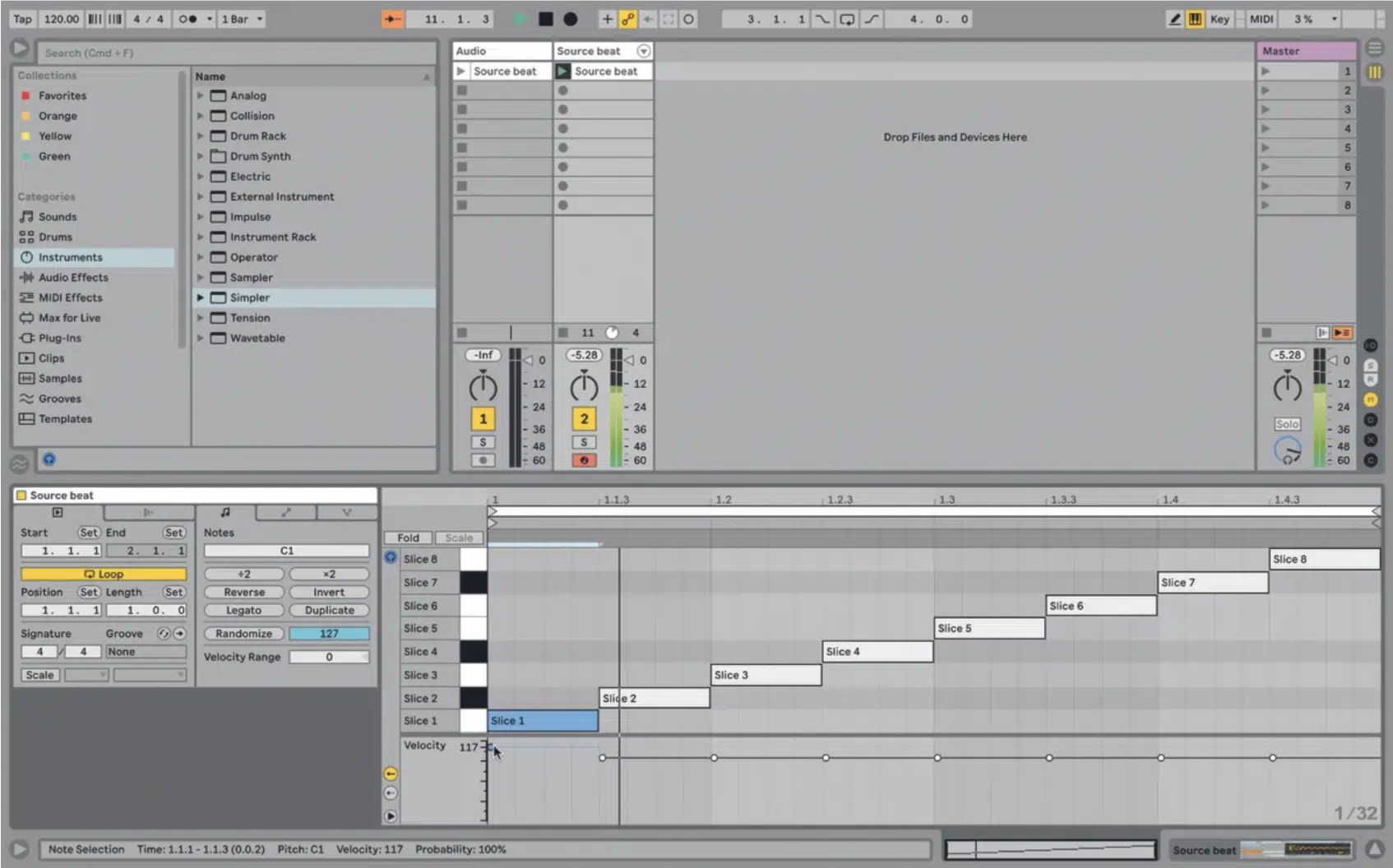
Image: Ableton
Processing and effects are key when it comes to shaping your breakbeats, so you’re going to want to start with EQ to carve out space for each drum sound.
If you want to know some EQ secrets, we’ve got you covered.
Then use compression to glue the drum breaks together and add punch.
NOTE: Adding reverb can give your drums a sense of space, but use it sparingly to avoid a muddy mix.
Distortion and saturation can add warmth and grit to your beats 一 for example, use a bitcrusher to add a lo-fi effect to your snares.
These techniques help in enhancing the overall sound/song and making your breakbeats more dynamic.
Chopping and Rearranging Breakbeats
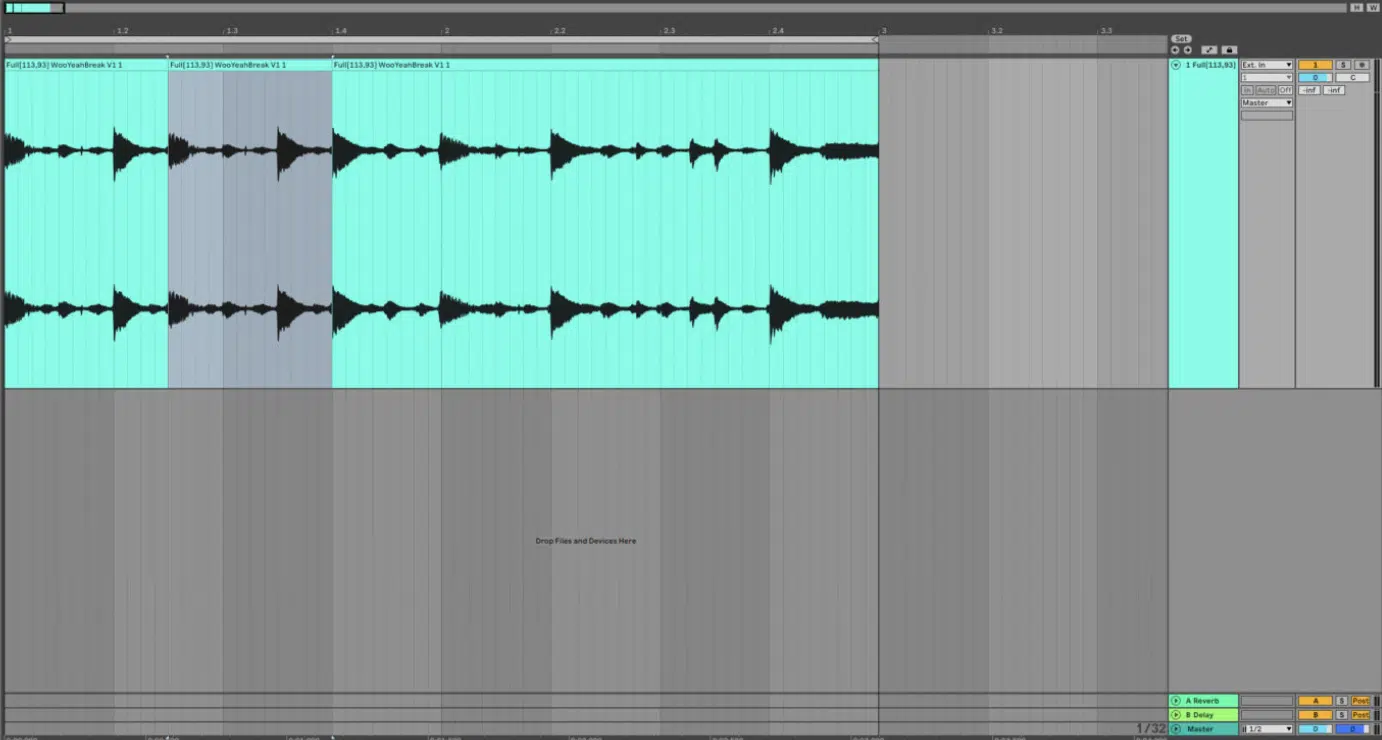
Chopping and rearranging breakbeats allow you to inject originality into your music, as we touched upon before.
Start by slicing a classic drum break, like the “Amen break,” into individual hits using your DAW’s slicing tool.
Rearrange these slices to form new rhythms…
For example, move the snare from the second beat to the fourth beat to create a different groove.
Experiment with reversing some slices for unexpected effects, such as reversing the hi-hats to add a unique texture.
Remember, as producers, it’s all about trying out new techniques and seeing where it takes you; you never know what you can discover.
Try pitching certain slices up or down to change the tonal quality of the drums.
You can also create fills by rearranging the slices in rapid succession 一 mimicking a live drummer’s roll.
Use this technique to break the monotony and keep your breakbeats engaging throughout the track.
By continually experimenting with different chopping and rearranging methods, you’ll discover endless possibilities for creating show-stopping breakbeats every time.
Advanced Techniques for Breakbeats/Drum Breaks
When you’re ready to push your breakbeats further, you’ve got to play around with some advanced techniques. The following methods can add complexity and uniqueness to your tracks, helping your song stand out in the competitive music scene.
-
Polyrhythms and Complex Patterns
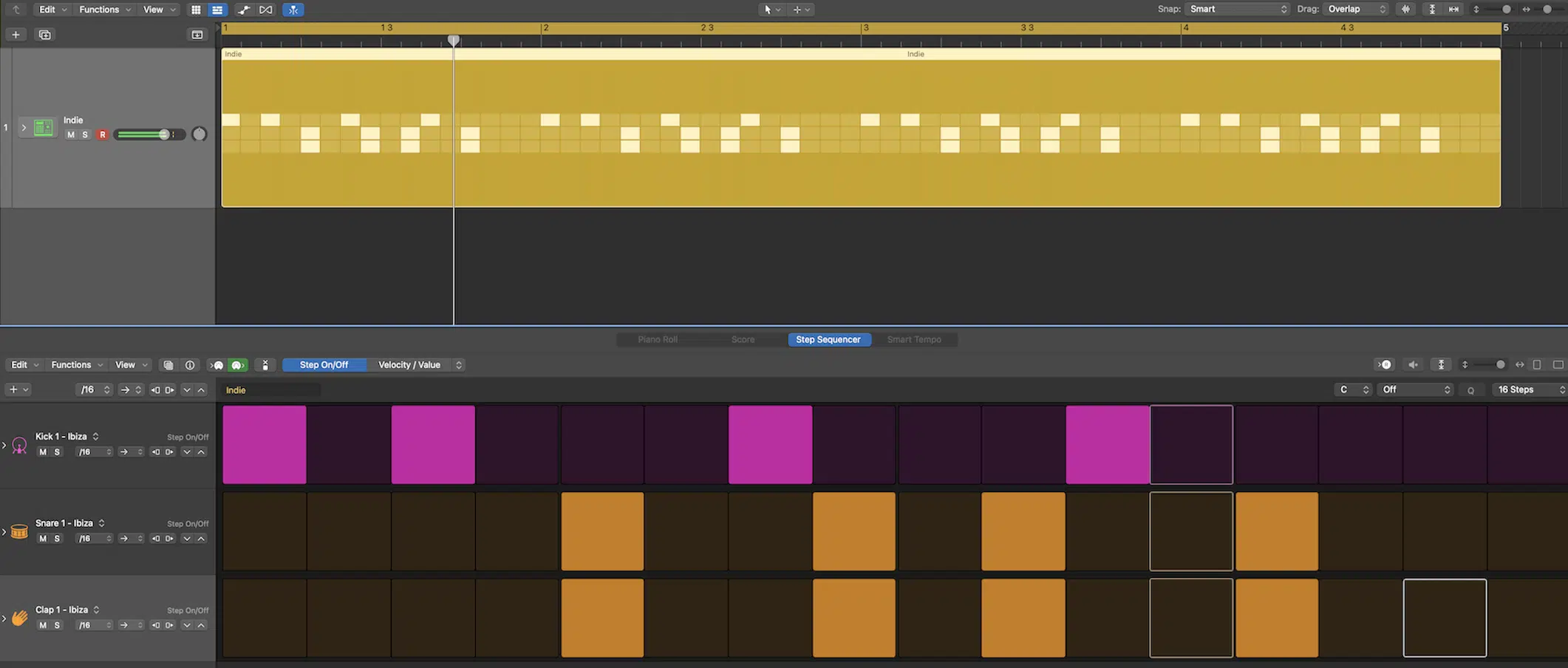
Polyrhythms can add a layer of complexity to your breakbeats and songs in general.
Try combining different rhythmic patterns, such as a 3/4 hi-hat pattern over a 4/4 kick and snare (one of my favs).
This creates a shifting, dynamic rhythm that keeps the listener engaged.
Look at artists like Aphex Twin for examples of complex breakbeat programming and practice playing around with different time signatures and syncopations.
This technique can make your tracks sound more professional and innovative.
-
Hybrid Styles and Genre-Blending (Electronic Music, Hip-Hop, Etc.)

Blending different genres can lead to fresh and exciting breakbeats, so try combining elements of:
This will help you create a sick hybrid style.
For example, use a hip-hop drum break with drum and bass hi-hats and funky percussion 一 it’s all about finding that sweet spot that’s still authentic.
It can help you discover a unique sound that stands out.
Also, listen to artists who excel in genre-blending for inspiration, which can encourage creativity and experimentation in your beats, regardless of genre.
-
Experimental Techniques

Don’t be afraid to push boundaries when experimenting with breakbeats because, just like every other aspect of production, it’s how you get ahead.
Try reversing entire drum breaks, like the “Amen break,” to create a unique sound that stands out and add extreme effects like granular synthesis or heavy distortion.
This will completely transform your breakbeats into something epic and unexpected.
Also, throw in some non-traditional sounds into your song, such as foley recordings of everyday objects or snippets of vocals, to add interesting textures to your beats.
For instance, layering a recording of tapping on a metal surface with drum breaks can give it an industrial edge.
Use time-stretching to slow down drum breaks, creating a heavy, down tempo vibe, or pitch-shifting to make them sound tighter and more energetic.
It’s all about making your track/music pop and people tap their feet when it’s played.
Playing around with these techniques can help you develop a distinctive sound that sets your tracks apart from the rest, so don’t slack in this area!
Breakbeats: Final Thoughts
Breakbeats are, hands down, one of the most powerful tools in any EDM or hip hop producer’s arsenal (if used correctly).
They can help your tracks stand out and set the dancefloor on fire.
Plus, being able to program intricate breakbeat patterns and layer sounds like an expert will elevate your music to a professional level.
And now, with all your knowledge, you’ll be able to easily create and manipulate breakbeats all day long.
This way, your tracks will always captivate listeners and never fall flat, which nobody wants.
As a bonus, check out the legendary Free EDM Drum Kit 一 it’s packed with high-quality drum samples that are perfect for creating killer breakbeats.
It includes a variety of kicks, snares, hi-hats, and percussion sounds that will add depth and punch to your tracks every single time.
Using these samples, you’ll be able to knockout breakbeats that are both unique and professional so your beats stand out.
Remember, practice makes perfect, so keep experimenting and refining your skills.
With dedication and creativity, you’ll be creating killer tracks that shut the club down and top everyone’s playlists in no time.
Until next time…







Leave a Reply
You must belogged in to post a comment.